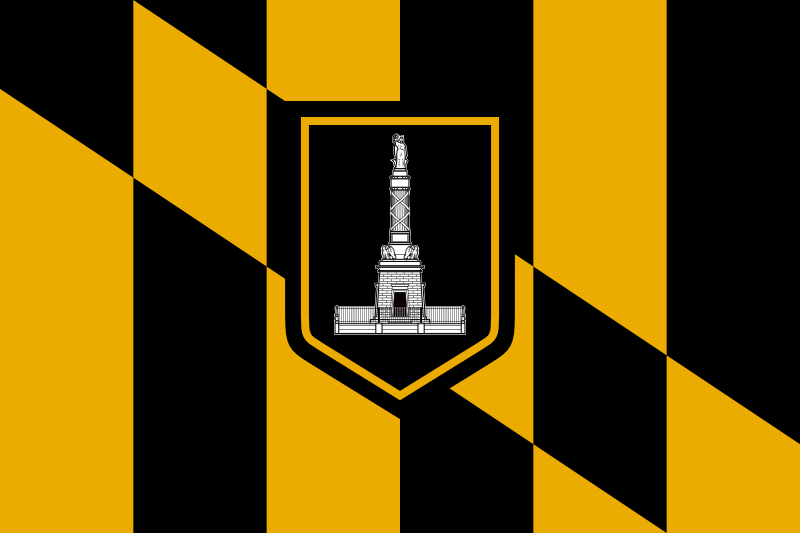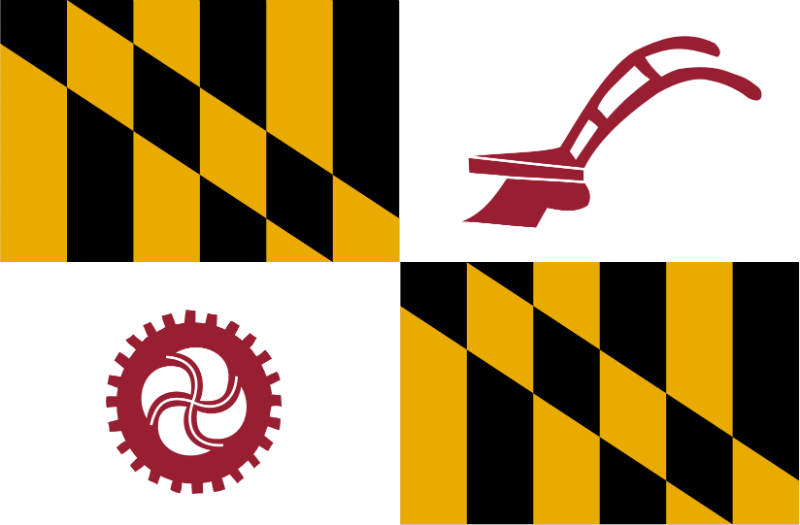Maryland’s flag stands out! Every Marylander has had at least one occasion to lament – or defend it’s bold colors and eye-catching design. Here’s the story of how the flag came to be.
For those unfamiliar with the Maryland state flag, it features four alternating quadrants; the first and fourth display the black and gold bars and diagonal inverted stripe of the Calvert coat of arms and the second and third quadrants depict red and white quadrants and an inverted cross bottony of the Crossland coat of arms.
HISTORY OF THE MARYLAND FLAG
The design of the Maryland state flag is steeped in Maryland history.
It was George Calvert, first Lord Baltimore, and his family, who were the colonial proprietors of Maryland. His mother, Alicia Crossland, was an heiress to the Crossland line, meaning that Calvert was free to use her coat of arms as well.
- Flag of the City of Baltimore, Maryland.
- Flag of Baltimore County, Maryland.
Earlier iterations of the Maryland state flag included those with Calvert colors, which were discontinued after the Revolution and replaced by various unofficial banners, the most common of which was the state seal set on a blue background. In 1854, a new state seal was established featuring the Calvert coat of arms and re-introducing the design to the public.
When the Civil War broke out and martial law was declared in Maryland, Confederate sympathizers and soldiers adopted the Crossland colors and bottony cross as a way to signify their home state while simultaneously distinguishing themselves from Unionist Marylanders, who used the Calvert colors.
According to the Maryland State website:
“Following Lincoln’s election in 1861, red and white “secession colors” appeared on everything from yarn stockings and cravats to children’s clothing. People displaying these red-and-white symbols of resistance to the Union and to Lincoln’s policies were vigorously prosecuted by Federal authorities.”
During Reconstruction, the state government sought a way to integrate Confederate soldiers into a state which had remained in the Union. The original designer and origin are unknown, but around the 1880s, the current design of the Maryland flag began appearing at events, including a parade celebrating the 150th anniversary of the founding of Baltimore. The four alternating quadrants came to symbolize unity and reconciliation in the post-war years.
The design was officially adopted as the state flag in 1904.
This post was written by Maggie Pelta-Pauls, a Waxter Intern with Preservation Maryland. A graduate of The College of William and Mary, Maggie is primed to research and write about Maryland history – especially culinary history. Learn more about Maggie and our The Waxter Memorial Internship program here: presmd.org/waxter.



